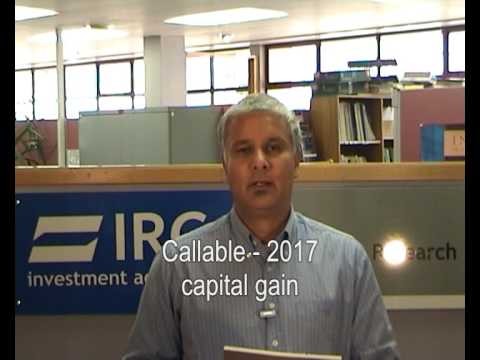Opportunities in the Alternative Asset Marketplace for Advisors PeertoPeer Lending
Post on: 17 Июнь, 2015 No Comment

Advertisement
Peer-to-peer (P2P) lending emerged a few years before the financial crisis gripped the globe. In the United States, Prosper was founded in early 2006 and Lending Club, which began as a Facebook application, opened its doors (figuratively speaking) in mid-2007. The timing was fortuitous as the economic challenges of 2008 and 2009including the financial crisis, ensuing credit crunch, and subsequent Great Recession created a perfect storm of opportunity for the fledgling industry.
The reluctance of banks and other traditional lending institutions to provide consumers and businesses with much-needed capital caused borrowers to look for alternate sources of funding (often at extremely high interest rates). At the same time, the persistently-low interest rate environment and market turbulence sent many investors on a search for potential sources of consistent, higher yields. In many cases borrowers were able to obtain P2P loans at a much lower interest rate than they would have received from more traditional sources of capital and investors were able to fund loans and earn a higher return on their capital than they were receiving from other investments or savings accounts.
Currently, the industry appears to be at an inflection point. In an interesting twist on the classic alternative assets storyinvesting in alternatives has traditionally been adopted by institutions well before individual investorsthe returns earned by relatively small, individual investors from P2P lending have now drawn the attention of advisors, institutions and other large investment industry players. The success of P2P lending has also piqued the interest of traditional lenders who are now exploring ways to participate in this space.
CUSTODY SOLUTIONS FOR P2P LOANS AT EVERY LEVEL
Registered Investment Advisors (RIAs) or Fund Managers:
RIAs must comply with the requirements of the amended SEC Custody Rule. A qualified custodian can provide custody for private funds such as hedge funds or separately-managed accounts (SMAs) created to invest in P2P loans. Additionally, as RIAs and Fund Managers explore the possibility of creating investment vehicles to securitize or leverage investments in these loans, they are looking to these same service providers for custody solutions.
Individual Investors:
Individuals can access P2P loans using both taxable and tax-advantaged accounts. The industry-leading lending platforms have entered into strategic relationships with qualified custodians to facilitate holding P2P loans in self-directed IRAs. IRAs are also able to invest in private funds or engage a RIA to manage their investments in P2P loans via SMAs, creating additional methods of investing for advisors and their clients.
CUSTOM CUSTODY SOLUTIONS
A critical element of the nascent P2P lending industry has been the development of business models that include flexible and scalable operations and information systems to meet the demands of; rapid industry growth, increased scrutiny by regulators and unique asset custody requirements. In addition to providing a way for advisors and individual investors to invest in P2P loans via self-directed IRAs, lending platforms have formed strategic relationships with independent qualified custodians to support other business functions that are critical but may fall outside of their core area of expertise.
There is little difference between the general types of services custodians have historically provided to investors in conventional promissory notes and these new P2P loans. The custodians basic role continues to be holding cash and assets on behalf of clients and sending the required account statements, essentially acting as the middle-man between investors and advisors.
However, the electronic nature of P2P loans has created an opportunity for a few experienced and innovative custodians to evolve in order to meet the diverse needs of this growing industry. In collaboration with the leading P2P Platforms, a service that once required reams of paper and an occasional obsolete fax machine to document and process has largely gone paperless.

SPECIAL PURPOSE VEHICLES
Special Purpose Vehicles (SPVs) are separate legal entities that are typically structured as a subsidiary or affiliate to fulfill a specific (and sometimes temporary) purpose. Some of the most common uses of SPVs in the P2P lending space include:
- Bankruptcy-remote entity: Some platforms have created a separate entity that sits between borrowers and lenders to hold the loans. Used as a form of protection for lenders in the event that a lending platform sponsor files for bankruptcy, its creditors should not be able to claim any of the assets in the SPV (i.e. the loans).
- Leverage: As investors look to maximize the potential of P2P loans, some RIAs and Fund Managers are utilizing a leverage provider and creating a SPV to offer leveraged P2P loan funds to investors.
- Loan Securitization: SPVs may also be used in the process of securitizing an asset. The securitization process can be structured in a variety of ways depending on the intent. Lending platforms may be structured in a way that essentially securitizes the online loan. While at the same time, an investment sponsor could use an SPV to pool loans of various qualities or to create a structure that could possibly be sold as a type of asset backed security (ABS) to investors.
While there is much talk in the media about P2P lending firms, and the investment opportunities they present, very little ink is currently being spilled about how these changes also affect the role of many of the investment industrys essential service providerssuch as qualified custodians.
The use of a qualified custodian isin a number of situationsrequired by the SEC Custody Rule. However, there is no ruling that specifically addresses how these custodians are to develop procedures and systems to provide custody for electronic assets like P2P loans. Instead, these changes are being driven by the industry, investor demand, and by custodians that have recognized the potential and dedicated themselves to creating solutions to service the custody needs of an increasingly digital world.
No one knows what the final version of the P2P marketplace will look like. But we do know technology is playing a central role. It is not only creating new investment opportunities like P2P Lending, but also changing the ways advisors can access and learn about investments while continuing to comply with regulatory requirements and address concerns about the safekeeping of their clients assets.
Reggie Karas is Senior Vice President and Managing Director of the Alternative Solutions Group at Millennium Trust.














